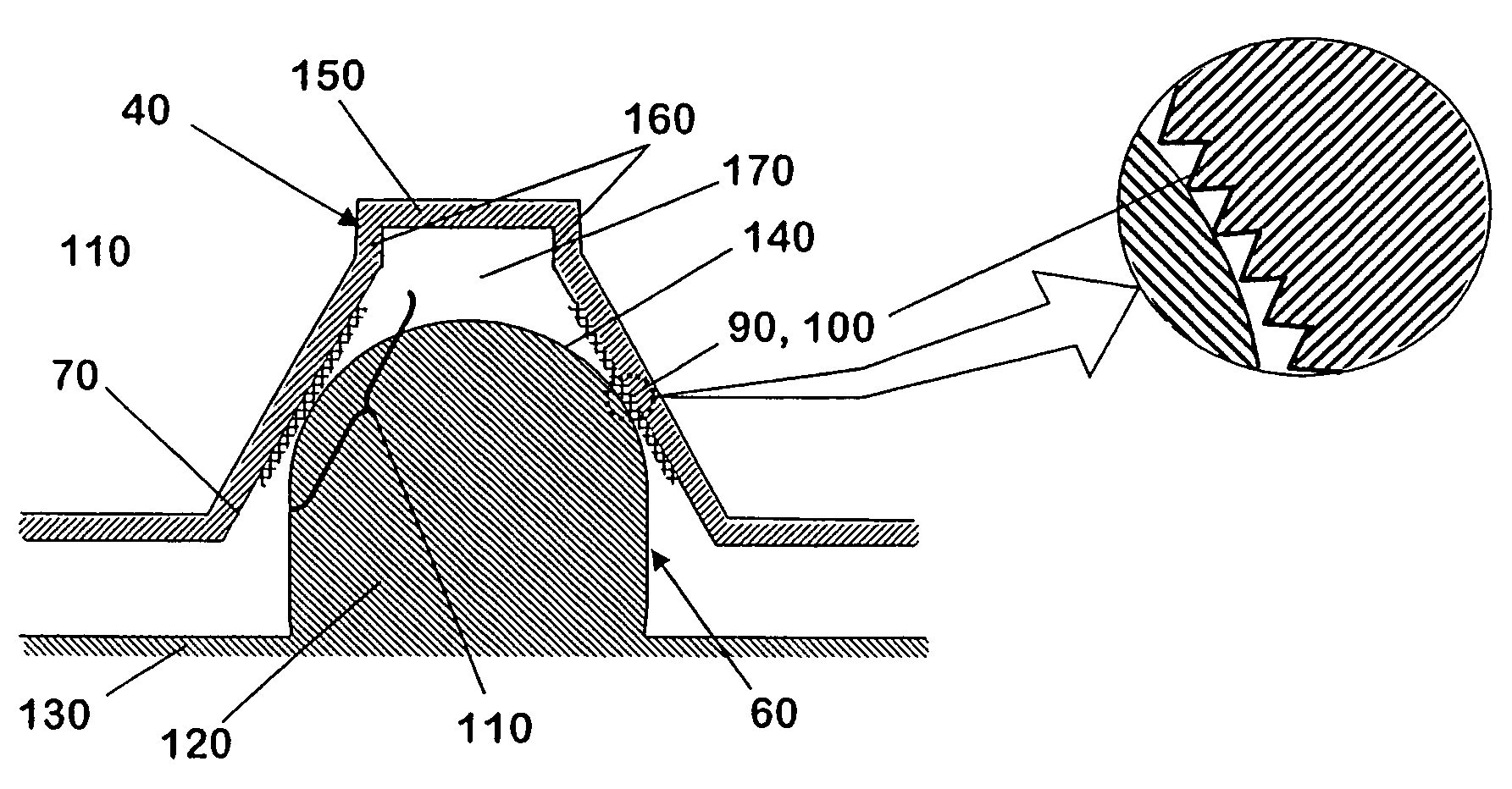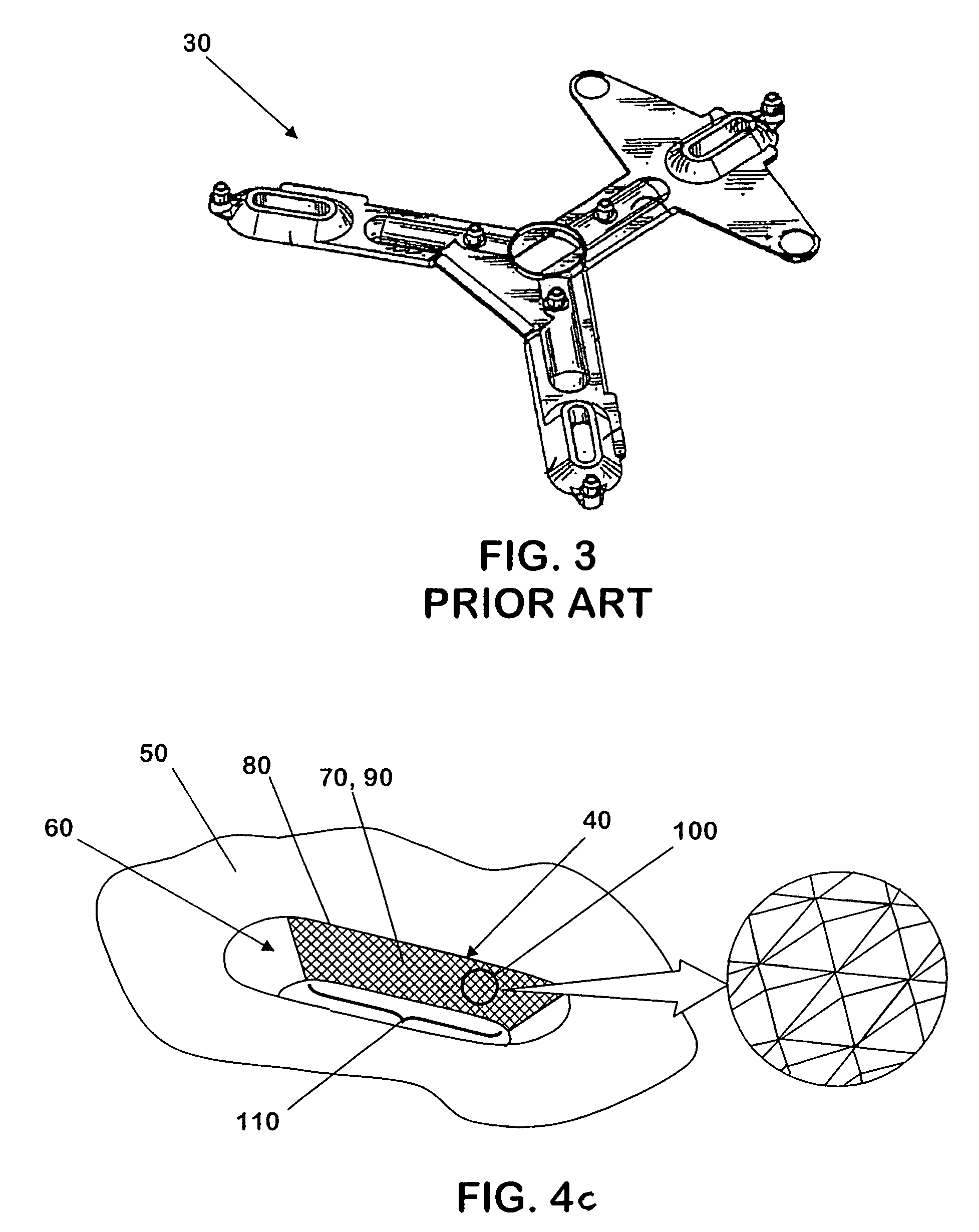Kinematic coupling with textured contact surfaces
a technology of kinematic coupling and contact surface, which is applied in the direction of tray containers, transportation and packaging, packaging goods types, etc., can solve the problems of substrate or carrier damage, interfacial parts may sometimes be frictionally attached or “stick, hang up” or other problems, to achieve the effect of reducing frictional forces and less contact area
- Summary
- Abstract
- Description
- Claims
- Application Information
AI Technical Summary
Benefits of technology
Problems solved by technology
Method used
Image
Examples
Embodiment Construction
[0021]Referring to FIGS. 4a, 4b, and 4c, 300 mm wafer containers 31, 32 and an embodiment of an interface portion 40 of a kinematic coupling plate 50 according to the present invention are illustrated. The container of FIG. 4a has a container portion 33, a door 34, side handles 35, equipment interfaces configured as female kinematic coupling grooves 36, shown in phantom lines, side rails 37, a robotic flange 38, and key slots 39. The container seats on equipment 39.5 that has carrier interfaces, not shown in this view. Each of the equipment interfaces may have textured contact surfaces 39.6 as described in more detail below where the equipment interfaces may engage or contact the external equipment. Such equipment may be the keys for operating latching mechanisms, forks for engaging side rails, and robotic grasping members for grasping robotic flanges.
[0022]FIG. 4b illustrates a 300 mm wafer container with a kinematic coupling plate 50 affixed to the bottom side 51 of the container ...
PUM
 Login to View More
Login to View More Abstract
Description
Claims
Application Information
 Login to View More
Login to View More - R&D
- Intellectual Property
- Life Sciences
- Materials
- Tech Scout
- Unparalleled Data Quality
- Higher Quality Content
- 60% Fewer Hallucinations
Browse by: Latest US Patents, China's latest patents, Technical Efficacy Thesaurus, Application Domain, Technology Topic, Popular Technical Reports.
© 2025 PatSnap. All rights reserved.Legal|Privacy policy|Modern Slavery Act Transparency Statement|Sitemap|About US| Contact US: help@patsnap.com



